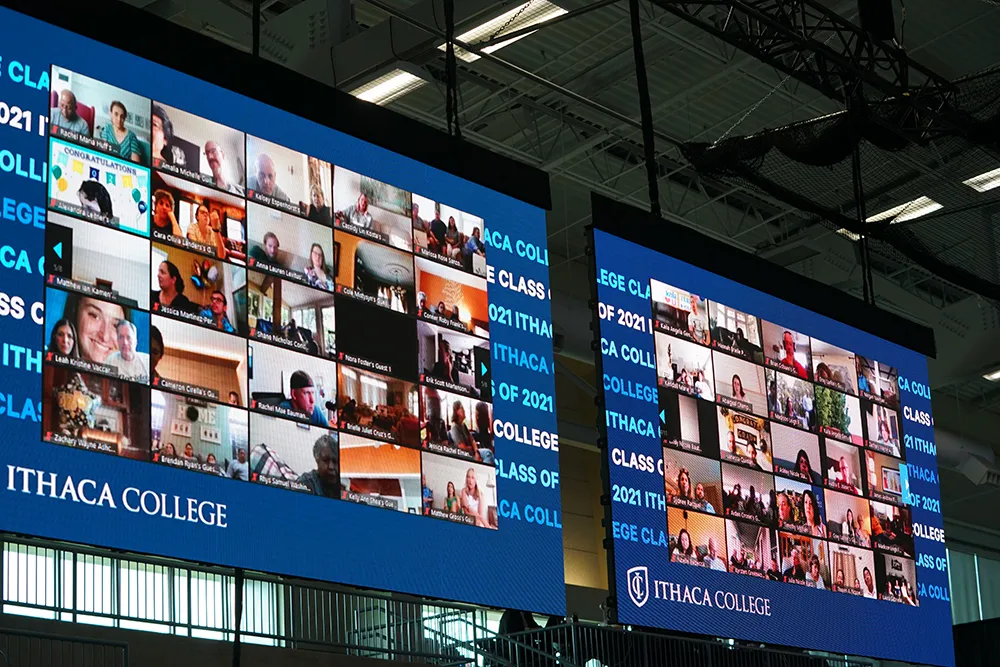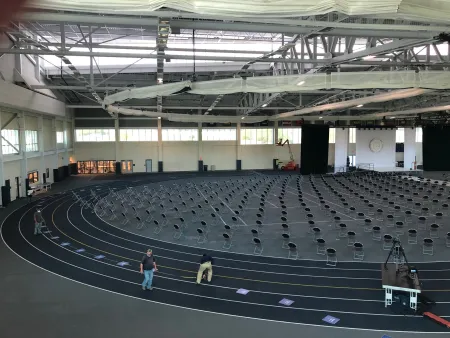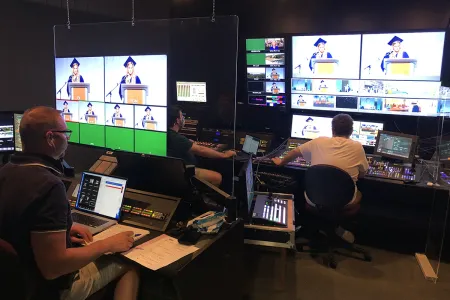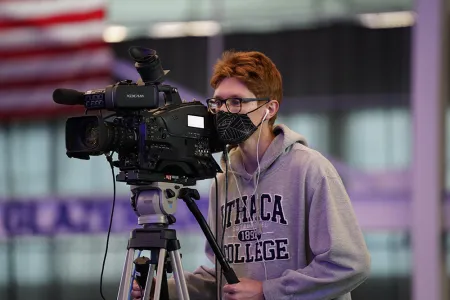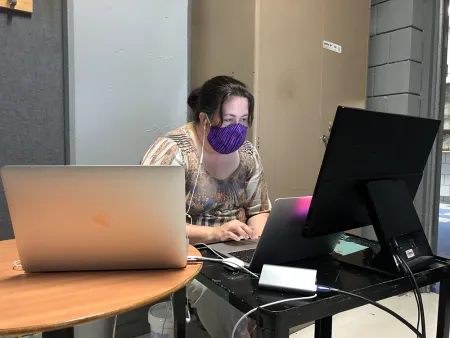Chrissy Guest, associate professor in the Roy H. Park School of Communications, was the broadcast producer for graduation and worked from Park Hall with other faculty, staff and students to livestream the event, while the graduates celebrated in Glazer. This meant controlling sound, camera feeds, YouTube live, integrating the comments from social media and making sure that students and families could participate virtually, as well as feeding in the surprise commencement speakers to those watching both in Glazer and at home.
Guest said that all these elements were brought to graduation to help the students feel like their family, alumni and special guests were involved in their special event.
“I started to think about ways to have parents involved, and how could we incorporate them,” said Guest. “How could we get students excited about the commencement even though they’re sitting 6 feet apart, their families aren’t there, and neither are faculty or staff. How can we have a really cool, immersive experience for the audience members who can’t be there in person, but feel connected, that was the biggest thing.”
To have this immersive experience, Guest utilized a Zoom pinning technique. At last year’s completely virtual commencement, Guest used this approach, which allowed them to bring each graduate to the screen live. This year, students worked on pinning, but it wasn’t just to celebrate graduates participating remotely. The eight pinners worked hard so that each graduate in Glazer could see their family on big screens as they walked across the stage. They choreographed who would pin to which monitor, as there were over 900 people in the Zoom rooms for each of the two ceremonies.
“I don't know any other graduation that brought individual parents to the screen,” said Guest. “If they had their camera on at home and we could find them, and I think we were amazingly fast in doing so, then they were on the big screens. It was quick typing, pinning and praying.”
